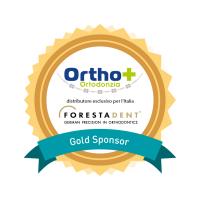Abstract
Orthodontic Practice in Pediatric Sleep Apnea: Where Are We Now?
by Alessandri Bonetti Giulio
The lecture will focus on defining the role of the orthodontist in the pediatric OSA. The actions concern screening, diagnostic suspicion, possible orthodontic therapy with mandibular advancement device and/or rapid palatal expander, when indicated. These devices have the potential to modify the morphology of the upper airways, increasing their caliber at the level of the oropharynx and reducing nasal resistance. It is highlighted the fundamental importance of the collaboration between paediatricians, child neuropsychiatrists and otolaryngologists for the diagnosis of OSA and the consequent therapeutic planning. The orthodontist can participate in the multidisciplinary therapy when OSA is associated with the presence of dento-skeletal malocclusion; that is to say a sagittal skeletal discrepancy (skeletal class II from mandibular retrusion) and/or a transverse dentoskeletal discrepancy of the maxilla. Great importance will be given to the most recent scientific evidences regarding the possible correlation between dentoskeletal anomalies and sleep-disordered breathing in children and the effects of orthodontic-orthopaedic and myo-functional therapy on respiratory parameters. Information will be given on the literature evidences on the possibility of preventing pediatric OSA and therefore on the efficacy of the preventive use of orthodontic therapy.
Learning Objectives
After this lecture, you will be able to recognize the dento-skeletal anomalies to be corrected in the OSA patient
After this lecture, you will be able to define when to propose orthodontic therapy in the OSA patient
After this lecture, you will be able to evaluate the effects of orthodontic therapy in the OSA patient












